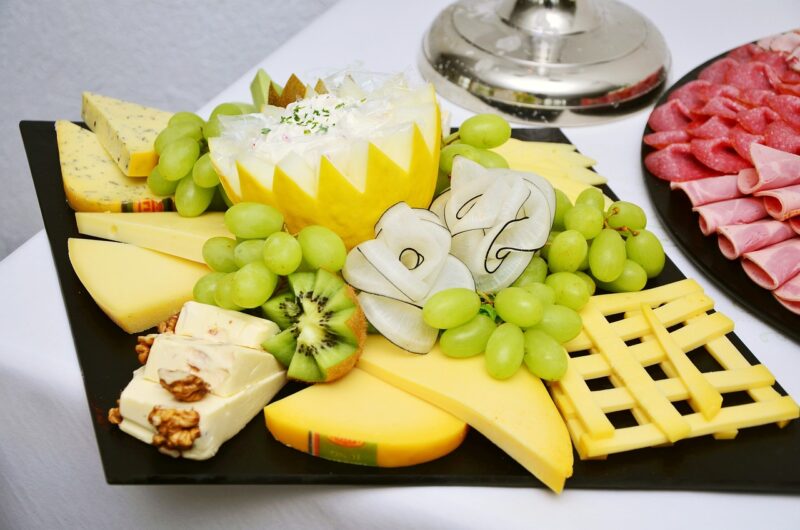
Cheese has been a beloved food for centuries, and its rich history, diverse types, and wide range of flavors and textures make it a fascinating subject to explore. From creamy Brie to sharp Cheddar, cheese offers something for everyone, making it a staple in many diets around the world. In this article, we will delve into the different types of cheese, provide tips for tasting, and discuss the best pairings to enhance your culinary experience.
1. A Brief History of Cheese
The history of cheese dates back over 7,000 years. While the exact origins remain somewhat of a mystery, historians believe it likely originated in the Middle East or Central Asia. Farmers discovered that milk from domesticated animals, such as cows, goats, and sheep, could be preserved through fermentation. The process of curdling the milk created cheese, providing an easily transportable and long-lasting food source.
Over the centuries, cheese-making evolved across different cultures, leading to a variety of techniques and regional specialties. Italy’s Parmesan, France’s Roquefort, and Turkey’s feta are just a few examples of how local ingredients and methods influenced cheese development.
2. Understanding Cheese Classification
Cheese can be categorized in several ways, including milk source, texture, aging process, and regional origin. Here are the primary classifications:
- By Milk Source: Cheese can be made from cow, goat, sheep, or even buffalo milk. Each type has its own flavor profile and characteristics.
- By Texture: Cheese can be soft, semi-soft, hard, or blue. Soft cheeses like Brie are creamy, while hard cheeses like Parmigiano-Reggiano are crumbly and granular.
- By Aging Process: Fresh cheeses, which are not aged (e.g., ricotta and mozzarella), have mild flavors, while aged cheeses develop deeper, more complex flavors.
- By Origin: Terroir plays a significant role in cheese flavor. Regional cheeses reflect local resources and traditions, like Swiss Emmental or French Camembert.
Understanding these categories helps you appreciate the vast diversity in flavors and textures that cheese offers.
3. Exploring Different Types of Cheese
Now let’s explore some popular types of cheese that you might want to try:
- Soft Cheeses: Cheese such as Brie and Camembert are known for their creamy texture and mild flavors. They can be enjoyed on their own or spread on baguettes.
- Semi-Hard Cheeses: Gouda and Gruyère are examples that offer a balance of flavor and texture. They work wonderfully in sandwiches and as melting cheeses in recipes.
- Hard Cheeses: Aged cheeses like Parmigiano-Reggiano and Pecorino Romano have rich flavors and are perfect for grating over pasta or salads.
- Blue Cheeses: Gorgonzola and Roquefort feature veining from mold cultures, providing a distinct and sharp flavor. They are excellent in dressings or paired with fruits.
- Fresh Cheeses: Mozzarella and feta are examples of fresh cheeses that are tangy and versatile, perfect for salads or pizzas.
Each of these cheese types showcases unique characteristics that can elevate a meal or a cheese platter.
4. Tasting Cheese: A Step-by-Step Guide
Tasting cheese is an art form that requires your senses. Here’s how to properly taste cheese like a connoisseur:
- Observe: Start by observing the cheese’s appearance—look at the rind, color, and texture. Each feature can tell you a lot about its aging and type.
- Smell: Swirl the cheese under your nose and take a few short sniffs. Notice the aroma, which can range from earthy to tangy.
- Taste: Take a small piece and let it sit on your tongue briefly before chewing. Pay attention to the flavors that develop over time—initially, some cheeses may taste mild but become stronger as you chew.
- Pairings: Consider how the cheese pairs with accompaniments like fruits, breads, or wines. The goal is to enhance the flavor experience.
Following these steps will help you appreciate the subtleties and complexities of flavor found in different cheeses.
5. Perfect Pairings for Cheese
Pairing cheese with the right accompaniments can elevate its flavors and create memorable dishes. Here are some classic pairings you should consider:
- Wine: Generally, white wines complement softer cheeses, while full-bodied red wines enhance stronger flavors found in aged or blue cheeses.
- Fruits: Fresh or dried fruits such as figs, grapes, and apples bring out the sweetness and balance the saltiness of many cheeses.
- Nuts: Pairing cheese with almonds, walnuts, or pecans adds crunch and a nutty flavor that can enhance the cheese experience.
- Bread and Crackers: A crusty baguette or simple crackers can act as a vessel to carry the rich flavors of cheese.
- Charcuterie: Meats like prosciutto or salami add savory notes that complement cheese nicely, making for a well-rounded platter.
Experiment with different pairings to find the perfect match for your cheese selections.
Conclusion
Cheese is a culinary marvel that brings joy and flavor to our meals. By understanding the different types of cheese, following tasting techniques, and experimenting with pairings, you can enhance your appreciation for this delightful food. Whether you enjoy it on its own, as part of a gourmet platter, or in your favorite recipes, cheese undoubtedly has a special place in our kitchens and hearts.
So gather your favorite cheeses, pair them with delectable accompaniments, and savor the wonderful world of cheese today!







